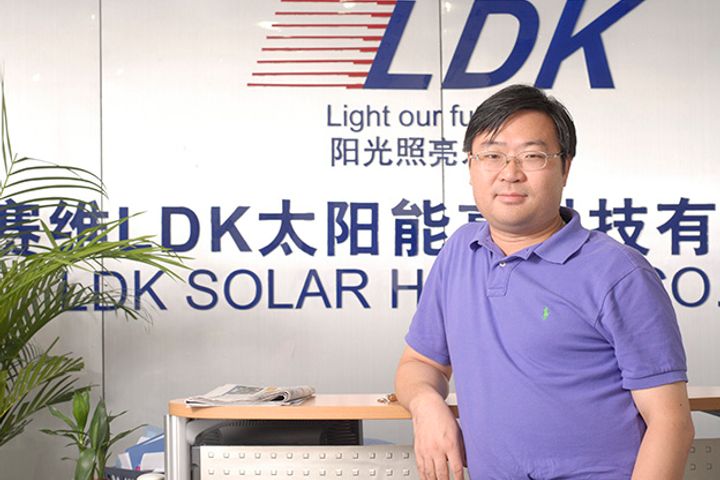 Jiangxi's Ex-Richest Man Is Now a Fugitive Accused of Appropriating Funds
Jiangxi's Ex-Richest Man Is Now a Fugitive Accused of Appropriating Funds(Yicai Global) Aug. 22 -- Peng Xiaofeng, chairman of solar solutions provider SPI Energy and once the richest man in Jiangxi province, has become a wanted man as police look to arrest him on suspicion of illegally absorbing public deposits.
His whereabouts are currently unknown.
Peng's company, which runs a crowd-funding platform for solar projects called Solarbao, ran into trouble in April 2017 when it was unable to repay investors as the receipt of solar subsidies from the government had been delayed. By October, it had amassed about CNY630 million (USD92 million) in debt and left around 11,000 investors in the lurch.
The company's latest repayment totaled CNY60,000 (USD8,730) to 13 investors, according to Yicai Global research. While data from New York-based China news portal The Epoch Times shows more than 1,300 investors have been repaid overall.
Rise and Fall
Peng, 43, has had a rollercoaster life since being born in a small town in Jiangxi. He built his first company at 22 years old, founding Suzhou Liuxin Industrial in 1997 to make and sell protective equipment. When on a business trip in Europe, the shrewd entrepreneur noticed that local governments were amending traffic safety laws to require all vehicles to have reflective vests on board, and quickly took advantage to command a 30 percent market share soon after the new rules came into effect.
"At that time, my goal was rather simple," Peng once said. "I expected to save money to realize my dream of studying in the US, but wound up working on the business for eight years."
Peng did raise plenty of capital during that time, and ended up using it to build the foundations for his shift into the solar sector, which began to boom at the turn of the century.
He explored the industry and some of its top companies at home and abroad for two years before deciding to take the plunge himself, eventually setting up LDK Solar in his home province in 2005.
Two years later, he took the company public in New York, raising USD486 million and becoming the first company from Jiangxi to list in the Big Apple. It was also the biggest initial public offering the new-energy sector had seen at the time, and the largest IPO among United States-listed Chinese companies.
Peng, still just 32 at the time, was already leading the national new-energy industry. Based on the company's market value when stock prices were at a peak, his assets were worth as much as CNY40 billion (USD5.8 billion). LDK continued to grow over the next few years, with revenue surpassing CNY12 billion in 2008 to make the company the youngest among China's 500 biggest firms. Two years later, it topped shipments and profit tables and was employing over 20,000 staff.
But as Europe's solar power markets struggled in 2011, China's photovoltaic industry took a hit and the price of polycrystalline silicon, one of the raw materials used by LDK, started to fluctuate sharply. This plunged LDK into debt and on Aug. 6, 2014, Peng resigned as chairman and general manager.
History Repeats
Despite his failings, he bounced back just months later in January 2015, setting up SPI Energy and the Solarbao platform, which combined internet finance with the solar sector. Investors using the service purchase solar equipment from Solarbao, which then acts as an agency and leases it out to power stations on their behalf.
Like LDK, Solarbao quickly found success and Peng took SPI public on the Nasdaq in January 2016.
"Ten years ago, when I made the biggest Stateside IPO by a Chinese company, I never expected that I'd be back here starting all over again," he said at the time.
In May 2016, the firm released its 2015 annual statement. While revenue had more than doubled to USD190 million, losses tallied USD185 million to mark a third year of deficits after winding up USD32 million and USD5 million in the red in 2013 and 2014.
Peng told Yicai Global the following month that the loss was mainly due to equity incentives offered to staff before the listing and the cost of the IPO itself. The company was running smoothly and was ready to begin a path of steady development, he said.
It was a year later that the company announced it was behind on payments to investors as money from the power stations had been delayed by government subsidies taking longer than expected to be dished out.
Industry insiders put Solarbao's failure down to dangers in its operation model: using short-term capital to fund long-term projects. Solar power plants tend to have a payback period of about five to seven years at best but, they can go on to around 10 years, whereas the lifecycle of solar financial products is so short that the company would struggle as soon as those funds fell into short supply, one analyst said.
Editor: James Boynton